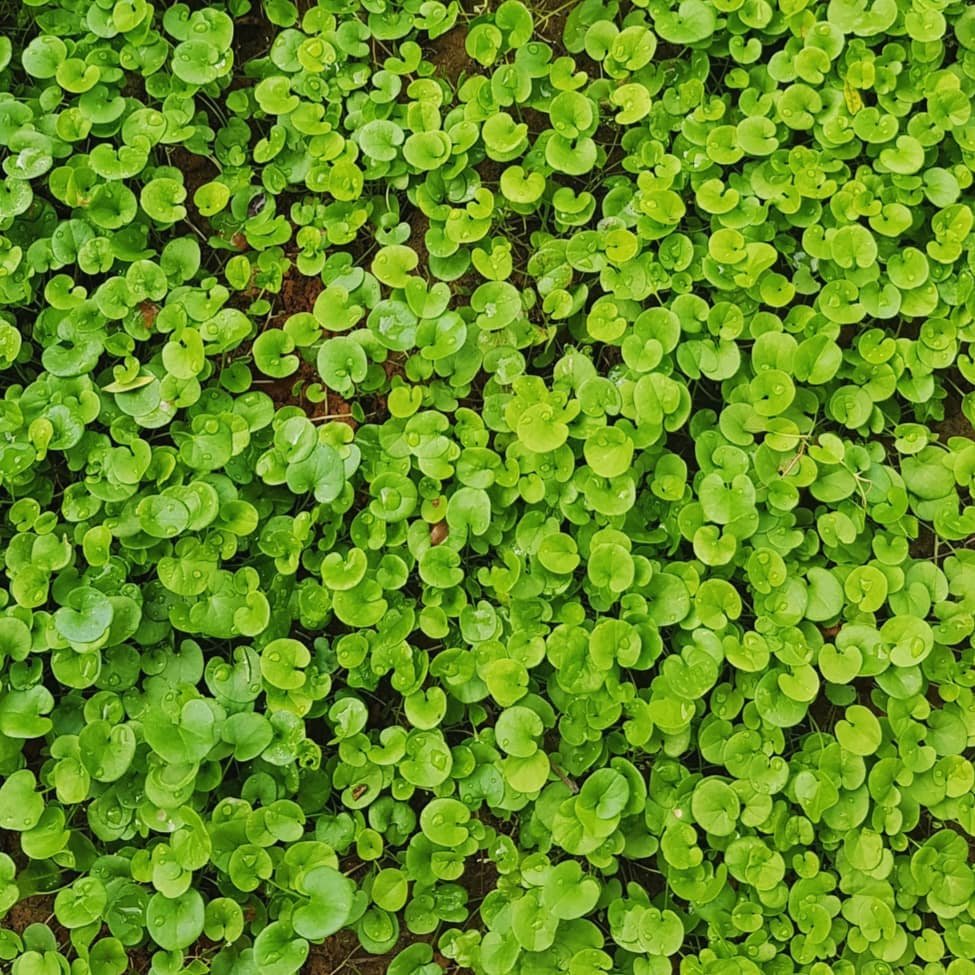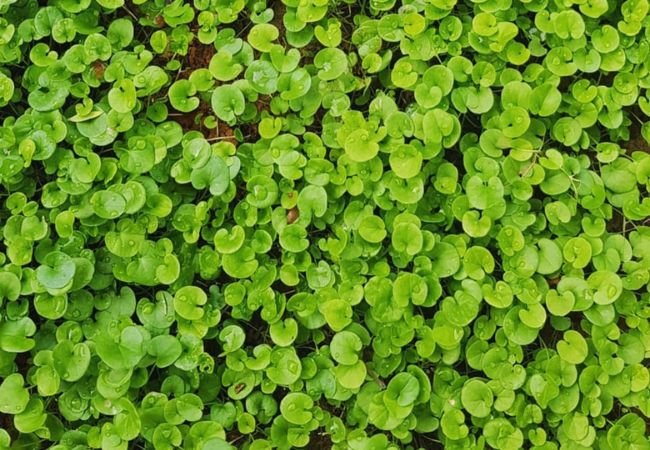Discover how to cultivate a lush, dense Dichondra lawns that requires minimal upkeep. Learn the secrets to planting, caring for and maintaining this durable, drought-tolerant groundcover.
If you’re looking for a low-maintenance alternative to traditional turfgrass, Dichondra lawns is an excellent option to consider. Also known as kidneyweed or ponyfoot, Dichondra repens is a hardy, spreading groundcover that forms a dense, green carpet when grown as a lawn.Compared to other grass types, dichondra has some significant advantages. It’s highly drought-tolerant, requiring far less water and mowing to thrive. This resilient plant also shrugs off moderate foot traffic, making it ideal for spaces like play areas or pathways.
While dichondra may be low-maintenance, it still requires some particular care to establish a lush, even lawn. In this comprehensive guide, we’ll cover everything you need to know about planting, growing, and maintaining a healthy dichondra lawn so you can enjoy its benefits with minimal effort.
Here’s an easy chart for Dichondra lawns:
| Aspect | Information |
|---|---|
| Botanical Name | Dichondra repens |
| Common Name | Dichondra, Kidney Weed |
| Plant Type | Perennial ground cover |
| Zones | 7-11 |
| Sun Exposure | Full sun to partial shade |
| Soil Type | Well-draining, sandy or loamy soil |
| Watering | Moderate; keep soil consistently moist but not waterlogged |
| Growth Habit | Creeping, low-growing |
| Height/Spread | 1-2 inches tall, spreading |
| Special Features | Dense, mat-like cover, drought-tolerant, low maintenance |
What is Dichondra?

Dichondra repens is a creeping perennial plant in the Convolvulaceae family, which also includes common morning glories. It originated in the subtropical regions of the Americas and western Pacific but has naturalized across much of the southern United States.
Dichondra grows as a dense, mat-forming groundcover that spreads via stems called stolons. These stolons root at the nodes as they creep along the ground, forming new plants. The small, rounded leaves give dichondra lawns a very fine, delicate texture.
While dichondra is primarily valued as an ornamental groundcover and lawn alternative these days, the plant has also been used historically as a food source and herbal remedy by some Native American tribes.
Some key traits of dichondra lawns include:
- Soft, fine texture underfoot
- Uniform bright green color
- Moderate wear and drought tolerance
- Spreads to form a thick mat
- Grows 1-2 inches tall
- Small, inconspicuous yellow flowers
With its low profile and lush appearance, dichondra makes a unique and attractive “no-mow” lawn for locations where traditional turfgrass struggles. It’s an especially good choice for sunny, sloped areas or paths that would be difficult to mow.
Choosing the Right Dichondra Variety
There are actually a few different cultivars of dichondra to choose from, though most home lawns simply use the standard Dichondra repens species. Some varieties to be aware of:
- D. repens – Classic dichondra or kidney weed, these spreading plants grow 1-2 inches tall with rounded, green leaves.
- D. micrantha – This species has slightly smaller leaves and a more compact, lower-growing habit than D. repens.
- ‘Emerald Falls’ and ‘Emerald Carpet’ – More cold-hardy cultivars of D. repens bred for use as ornamental groundcovers.
- D. carolinensis – Native to the Southeastern United States, this species has rounder, thicker leaves than other dichondras.
For general lawn use, any cultivar of D. repens will create that lush, dense mat you’re looking for as long as you provide the proper growing conditions. The more cold-hardy selections like ‘Emerald Falls’ may be preferable in cooler regions.
Planting a New Dichondra Lawn
To establish a new dichondra lawn from scratch, you’ll need to start with seeds, plants or sod. Here’s how to get started:
Preparing the Site
Dichondra prefers to grow in well-draining soil with a pH between 6.0-7.5. Work in plenty of compost or other organic matter to improve drainage and fertility before planting.
Remove any existing vegetation from the area and level the soil surface. You can install landscape edging to keep the dichondra contained.
Seeding a Dichondra Lawn
Sow dichondra seeds in early spring once air temperatures are at least 65°F. Spread the seeds evenly at a rate of 1/4 pound per 1,000 square feet, then lightly rake them into the top 1/2 inch of soil.
Keep the seedbed consistently moist and allow 7-14 days for the seeds to germinate. Be patient – it can take 6-12 months for dichondra to fully spread out from seed.
Planting Divisions or Plugs
For quicker coverage, install nursery-grown dichondra plants or plugs every 8-12 inches over your prepared site. Stagger the plants in a grid pattern and fill in any gaps with soil.
Keep newly planted dichondra well-watered until it takes root and starts actively spreading via the stolons. This can take 4-6 weeks.
Installing Dichondra Sod
The fastest way to get an established dichondra lawn is to install sod pieces. But dichondra sod can be hard to find commercially and must be sourced from specialty growers.
Follow the same site prep as above, then lay the sod pieces tightly against one another, staggering the joints in a brick pattern. Water frequently to encourage root establishment.
With any planting method, it will take 1-2 years for dichondra to form a fully filled-in lawn once it starts spreading out. Be diligent about weeding and providing adequate water in the meantime.
Caring for Your Dichondra Lawn
While dichondra is certainly low-maintenance compared to turfgrass, it does require some regular care to keep it healthy and looking its best. Here’s what you need to know:
Watering
Dichondra has good drought tolerance once established, but it needs consistent moisture when first planted. Water newly seeded or sodded areas daily to keep the soil surface moist.
Once the plants start spreading, aim to provide about 1 inch of water per week either from rainfall or irrigation. Dichondra is better able to tolerate drought than overwatering, so don’t let it sit in saturated soil.
Mowing (Or Not!)
One of the biggest selling points of dichondra is that it rarely needs mowing. At its ideal height of 1-2 inches, dichondra forms a tight, mat-like carpet that mowers can’t really penetrate.
You may want to run a mower over the dichondra once a year in early spring on its highest setting to trim off any unruly growth or weed stragglers. But beyond that, your “mowing” can be minimal.
Fertilizing
Dichondra is a fairly light feeder when grown as a lawn. Apply an all-purpose fertilizer formulated for lawns in early spring for general maintenance. You can also fertilize dichondra after periods of active growth in summer.
Avoiding overfertilization, which can cause excessive growth that needs mowing and leads to thatch issues.
Weed Control
Dichondra carpets are incredibly effective at blocking out weeds thanks to their dense, mat-forming growth habit. Hand pull any stray weeds when they first appear before they can establish deep roots.
You can also apply a pre-emergent herbicide in early spring to prevent annual weed seeds from germinating in the first place.
Dethatching
Over time, accumulated dead plant matter called thatch can build up in your dichondra lawn, requiring dethatching to allow water and air to flow through. Use a special dethatching rake or power rake in early spring before new growth emerges.
As long as you stay on top of basic maintenance chores like weeding, fertilizing, and occasional dethatching, your dichondra lawn should remain lush and healthy with very little effort overall.
Dichondra Lawn Problems and Solutions
While dichondra is relatively low-maintenance, there are still a few potential issues to watch out for:
Browning or Dying Out
Patchy browning or dieback in dichondra is often caused by improper watering. This plant is drought-tolerant but won’t survive in chronically dry soil – increase irrigation frequency if you notice this symptom.
Excessively wet conditions can also cause root rot and die-off. Provide better drainage in areas that are staying waterlogged.
Lack of Spreading
If your dichondra lawn is not spreading outward via the stolons as it should, either temperatures or mowing height may be the culprit. Dichondra spreads most actively when air temps are between 70-90°F.
It may also not be spreading if you’re scalping the lawn too short – try mowing a








Leave a Reply